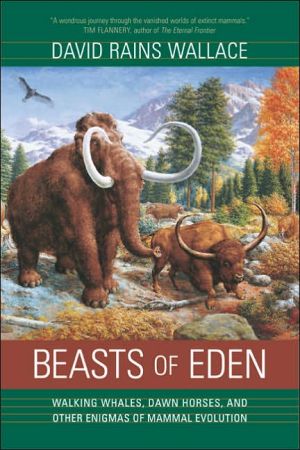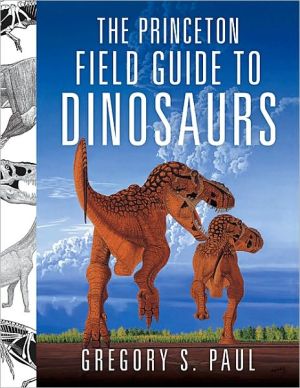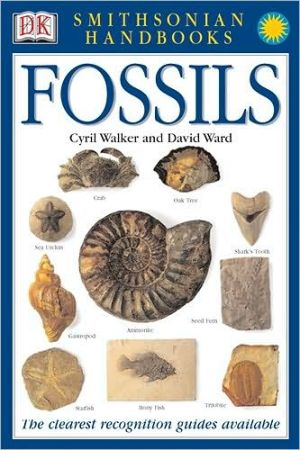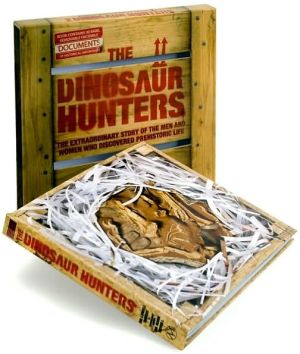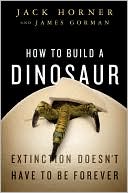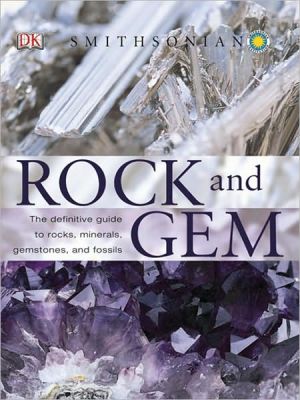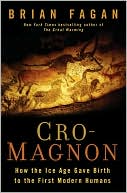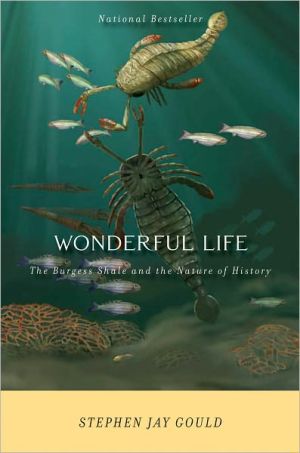Beasts of Eden: Walking Whales, Dawn Horses, and Other Enigmas of Mammal Evolution
Mammals first evolved at about the same time as dinosaurs, and their story is perhaps the more fascinating of the two—in part because it is also our own story.\ In this literate and entertaining book, eminent naturalist David Rains Wallace brings the saga of ancient mammals to a general audience for the first time. Using artist Rudolph Zallinger's majestic The Age of Mammals mural at the Peabody Museum as a frame for his narrative, Wallace deftly moves over varied terrain—drawing from...
Search in google:
"Beasts of Eden is a wondrous journey through the vanished worlds of extinct mammals. Exciting, insightful, and accurate, it is everything that good science writing should be."—Tim Flannery, author of The Eternal Frontier "A compelling scientific adventure story. . .. Peopled with colorful and larger-than-life characters, this account of the history of paleontology dramatically demonstrates how the interactions between crude but charismatic fossil seekers, ascetic intellectuals, temperamental artists, and many others have forever changed the ways in which we view life's prehistoric beginnings."—Ian Tattersall, author of The Monkey in the Mirror "Beasts of Eden is a true delight. Each page drips with the drama and passion of scientific pursuit. Wallace is a keen observer, a learned writer, and a great story teller—this is a must read!"—Don Johanson, Director of the Institute of Human Origins The New York Times - Helen E. Fisher David Rains Wallace, a science writer with 15 books to his credit, offers no original theories on mammalian evolution in Beasts of Eden. Instead, he presents a thoroughly researched, richly detailed and lively book on the ''bone hunters'' who traversed the badlands of the world searching for the fossils of mammals and on the vituperative intellectual battles that some of these paleontologists waged with one another. And as these stories unfold, one becomes familiar with the primary ideas and events in the rise of modern evolutionary thinking.
BEASTS of EDEN\ WALKING WHALES, DAWN HORSES, AND OTHER ENIGMAS OF MAMMAL EVOLUTION \ \ By DAVID RAINS WALLACE \ University of California Press\ Copyright © 2004 Regents of the University of California\ All right reserved.\ ISBN: 0-520-23731-5 \ \ \ Chapter One\ Pachyderms in the Catacombs \ THE MOST STRIKING FIGURE IN the Peabody's Age of Mammals comes toward the end, among the Ice Age's brilliant foliage. It is a wooly mammoth, and it takes up most of the wall's height with its rufous bulk, curling tusks, and high-domed cranium. It is the only figure, except for a soaring bird of prey, that extends above the horizon. Unlike the mural's coryphodonts and uintatheres, it is not engaged in a confrontation but gazes forward serenely as though confident of its preeminence. Even the naked pink nostrils at the end of its trunk have a confident air. The entire 60-foot-long painting, with its grandly shifting scenery and dozens of figures, might have been laboring to produce this magnificent and intelligent beast.\ Yet if the mammoth implies the culmination of certain valued mammalian qualities, there is another giant beast even nearer to the mural's end that does not. It stands on its hind legs, head slightly cocked, to look back toward the mammoth in a way that is hard to read. It might be challenging, fearful, or curious. Or it might not be looking at the mammoth at all, but simply gazing vacantly into the haze of time. It is hard to imagine what's in the creature's mind, because it is so strange. Unlike the elephantine mammoth, Megatherium resembles no familiar living creature. Indeed, there is something of Zallinger's slightly toylike dinosaurs about it. Standing propped on its massive tail, it is nearly as tall as the mammoth, but its small head and pigeon-toed feet make it seem clumsy rather than majestic, despite its gigantic claws. Compared to the mammoth's, its eyes are tiny and dull.\ The two figures facing each other like heraldic beasts, the one familiar and alert, the other bizarre and sluggish, lend a certain ambiguity to all the activity that precedes them, and this seems more than accidental. While Zallinger places them prominently at the end of mammal evolution's prehistoric story (both vanished less than ten thousand years ago), they figured with equal prominence at the beginning of its historical one, a beginning that also mingled confidence with obscurities. They embody a basic question about evolution-whether it is going "somewhere"-progressing toward "higher" traits like a mammoth's intelligence-or "nowhere"-producing smart and stupid creatures with aimless impartiality. Since the question involves human as well as mammoth intelligence, paleontologists have debated it vigorously since the science began.\ The idea that mammals have progressed anywhere over time is a recent one, although the concept of mammals is ancient, reflected in the Greek word for a hairy animal, therion, as opposed to a scaly one, herpeton. Aristotle recognized a distinct group of air-breathing, live-bearing creatures. "Some animals are viviparous, some oviparous," he wrote. "The viviparous are such as man, and the horse, and those animals which have hair; and of the aquatic animals, the whale kind as the dolphin." He also noted that all viviparous quadrupeds then known had teeth, and described them according to their various dentitions. Aristotle's observations decayed into hearsay and fantasy in Roman writers and medieval bestiaries, but post-Renaissance taxonomists like John Ray reaffirmed them. When Linnaeus created the class Mammalia, based on the feeding of young with milk, in the 1759 edition of his Systema Naturae, he included the animals now recognized as such. Except for mythic creatures like griffons, however, the idea that beasts might have been very different in the past-that the earth's living fauna might have changed in major, indeed startling, ways-did not occur to naturalists even during the Enlightenment. They would have to dig into the obscurities beneath living fauna to encounter it.\ That period's intellectual capital, still known as the city of light, actually overlies greater areas of darkness than most. One of my more vivid Parisian memories is of a walk through the catacombs below the boulevard Raspail, where grave diggers stacked the bones of six million people when cemeteries overflowed in the late eighteenth century. I don't know of a larger or tidier ossuary. Chamber after chamber was piled to the ceiling with carefully sorted femurs, crania, tibias, or pelvises, and I saw only a few of the manmade caverns, which extend for over 200 miles. They weren't dug to house the bones, but because Paris happens to be located on one of the world's best deposits of calcium sulfate, also known as gypsum and, when powdered, as plaster of Paris. Malleable, durable, and snowy white, gypsum is a first-rate building material, and miners began quarrying it when the Romans founded the town of Lutetia on the site of Paris two millennia ago.\ Authorities have used the gypsum mines to dispose of human remains at least since Romans threw the beheaded corpses of St. Denis and other missionaries into one on "martyr hill"-Montmartre. But more than human bones rest in the gypsum, a sedimentary rock that forms in shallow, coastal ponds where the climate is warm. Such places supported rich prehistoric faunas, as when the Paris gypsum originated some fifty million years ago, and shallow ponds preserve bones well. Fossils were common finds in the quarries as building boomed in the Enlightenment, and miners who had previously discarded bones found that they could sell them to the "savants" who thronged the capital. Displayed in "cabinets" along with crystals and other curiosities, the gypsum fossils included turtle and crocodile skeletons, but most were mammalian, as their owners would have perceived. Most other toothed animals have rows of identical spikes or pegs in their jaws; most mammals have a Swiss Army knife set of incisors, canines, premolars and molars. Since teeth are the most durable vertebrate fossils, collectors could recognize even fragmented beasts.\ Enlightenment collectors perceived little else about the plaster-of-Paris bones, however. Georges-Louis Leclerc, comte de Buffon, director of the royal natural history collections, did not encourage such perceptions, ignoring the gypsum fossils in his voluminous writings, and declaring that "the bones, horns, claws, etc. of land animals are seldom found in a petrified state." Like other eighteenth-century naturalists, Buffon was interested mainly in constructing a general "theory of the earth" to match the seventeenth century's Cartesian and Newtonian cosmologies. Finding and classifying bones played no great part in the undertaking.\ If Buffon had remarked on the Paris gypsum fauna, its crocodiles and other tropical aspects probably would have pleased him. They coincided with his theory that the earth, gradually cooling from a molten state, had been warmer in the past, and that tropical animals had then inhabited the north, as apparent elephant and rhino bones in Europe and North America seemed to show. Buffon was vague as to how such animals had originally been "born," as he put it, but he assumed that, aside from their emigration to the present-day tropics, they had not changed much since. An elephantine fossil from Ohio seemed to have nonelephantine teeth, but Buffon's colleague Louis Daubenton thought hippo teeth had gotten mixed with the skull. Buffon did not dwell on such confusions anyway. Intellectual consistency was not required of Bourbon courtiers, and the fact that the Paris gypsum did not contain elephants or rhinos might not have bothered him even if he had noticed it.\ After Buffon's death in 1788, aristocrats had more to worry about than classifying fossil mammals. A revolutionary mob stripped the count's sarcophagus of its lead lining, and his son went to the guillotine. The fossil trade picked up again after the Terror, however, and a 26-year-old newcomer to Paris was prepared to regard the gypsum bones in a new light. Georges Cuvier, who arrived in 1795 for an interview at the Muséum d'histoire naturelle, was not an aristocrat, or even a savant in quite Buffon's sense. He'd grown up in Montbéliard, then attached to the duchy of Württemberg, and although it was a French-speaking town, it was Lutheran. He'd attended a German academy, the Karlschule in Stuttgart, where he'd studied natural history in the firsthand way that was developing north of the Rhine. Naturalists such as Abraham Werner, a professor at the mining school in Saxony, were more concerned with describing phenomena accurately than with system-building on the Buffon model. They thought the old theorists superficial.\ When Cuvier graduated, he had gone to work tutoring the heir of a Norman noble family, the d'Hericys. Although he was at first enthusiastic about the Revolution, he had seen the Terror at work in the city of Caen, and he was relieved when the d'Hericys retreated to the safety of their estate on the coast near Fécamp. There he had improved his spare time by collecting the creatures of tidepools and mudflats, perceptively comparing their diverse structures. He had walked the coastal hills and valleys, observing in Wernerian fashion how local rocks were arranged with fossil-bearing, evidently younger strata toward the top and fossil-barren older rocks at the bottom. Naturalists called the lifeless strata "Primary" and the fossil-bearing ones "Secondary" and "Tertiary." (Although it wasn't quite that simple, because scattered, primitive fossils turned up in upper Primary strata, requiring the addition of a "Transition" category.)\ Cuvier was prepared for a museum job after several years of this, and the upheavals that emptied Buffon's tomb had left openings. He was a presentable young man. A portrait from that time, possibly by himself, shows long hair, soulful large eyes, and a sensitive but firm mouth. The clothes are slightly en deshabille, giving a rustic air, which must have appealed to the admirers of Jean-Jacques Rousseau, the philosopher of natural harmony, in the museum's older generation. Within the year, young Georges was substituting for an elderly superior as a lecturer in comparative anatomy, and he soon became a member of National Institute, the successor to Buffon's Royal Academy. He didn't let this go to his head, and he kept working diligently. While continuing his invertebrate research, he branched out into vertebrates with the collections his predecessors had accumulated.\ Although admiring Buffon's prose and erudition, Cuvier had little respect for his theorizing. He saw from teeth and other features that the fossil European "elephant," called a mamut by Siberians, who sometimes encountered its carcass in permafrost, was a different species than the living Indian and African ones. He saw, furthermore, that it was a species that had probably ceased to exist, although not, he thought, because the climate had become too cold. It differed from the elephant the way "the dog differs from the jackal and hyena," he wrote, and "since the dog tolerates the cold of the north while the other two only live in the south, it could be the same with these animals, of which only the fossil remains are known." Elephants had not fled south to escape a cooling planet's chill. Another species, adapted to the cold, had disappeared from some other cause, perhaps a catastrophic incursion of the sea.\ Zallinger's mammoth seems to commemorate Cuvier's confident insight, and an earlier historical encomium by Henry Fairfield Osborn might caption the great beast's symbolic role in the mural. "The wooly mammoth is the classic of paleontology; it is the first extinct animal to be found by man; it is the first to be used as proof of a universal deluge; it is the first to be used as proof of the existence of a long extinct world of mammalian life antecedent to the deluge; it is the first to receive a scientific description in the Latin language; it is the first to receive a scientific name." Looming against glaciated peaks, furred to its enormous toes, Mammuthus leaves no doubt that it "differs from the elephant."\ Cuvier further identified vanished kinds of bears, crocodiles, rhinos, and deer, speculating that "some kind of catastrophe" might have extinguished them too. So much for Buffon's magniloquent "theory of the earth" and its cooling planet. Yet such animals were still enough like living ones to make the idea of complete disappearance, extinction, seem tentative. Cuvier fixed that in his next paper, however. A colossal skeleton from South America had arrived in Madrid, and he acquired drawings of it. The twelve-foot-long beast had walked on massively clawed feet, and the American savant Thomas Jefferson thought a similar one was a giant carnivore, a reasonable conjecture from such massive claws. Cuvier knew enough mammal anatomy, however, to see strong similarities between the skeleton and those of the much smaller herbivorous tree sloths still living in South American forests. The ancient beast's few teeth were peglike, hardly a carnivore's, and he concluded that it was a giant, ground-dwelling sloth. He named it Megatherium, "great beast," and it was indeed one of the largest that ever lived, as the specimen that Zallinger painted gazing dimly toward his mammoth demonstrates. Megatherium also was one of the strangest mammals ever, as the mural shows, and there was no record in 1792 of any such monster living. If it had been alive in the unknown American interior, Cuvier reasoned, word of it would have reached the coast, and no such reports existed. It was almost certainly extinct.\ Extinction was a fairly new idea, transgressing assumptions common since Aristotle about a stable natural order. Cuvier was not the first to have it. Buffon had toyed with it, and Jean-Baptiste Lamarck, Cuvier's senior colleague at the museum, believed that prehistoric species had disappeared. Lamarck had a very different interpretation of the phenomenon than Cuvier, however. He thought species had disappeared not by dying out but by transmuting into new species, a feat accomplished partly by passing newly acquired characteristics to their offspring. Habitually reaching up to browse in trees (to give a popular, if oversimplified, example of Lamarck's thinking), the giraffe gradually might have been transformed from a vanished, short-necked species into a living long-necked one. Life was a process of ever-ascending change, with "animalcules" continually generating spontaneously in water and soil, then transmuting progressively from worms to fishes to lizards to beasts, eventually to savants.\ Rousseau had helped launch Lamarck's career, and the aging naturalist's theory was optimistic in keeping with prerevolutionary assumptions about nature's goodness and change's benign possibilities.\ \ Continues...\ \ \ \ Excerpted from BEASTS of EDEN by DAVID RAINS WALLACE Copyright © 2004 by Regents of the University of California. Excerpted by permission.\ All rights reserved. No part of this excerpt may be reproduced or reprinted without permission in writing from the publisher.\ Excerpts are provided by Dial-A-Book Inc. solely for the personal use of visitors to this web site. \ \
List of illustrationsAcknowledgmentsPrologue: the fresco and the fossil1Pachyderms in the catacombs12Dr. Jekyll and the stonesfield jaws143The origin of mammals254The noblest conquest415Terrible horns and heavy feet546Mr. Megatherium versus professor Mylodon707Fire beasts of the antipodes798Titans on parade919Five-toed horses and missing links10410The invisible dawn man11511A bonaparte of beasts12312Love and theory13513Simpson's Cynodont-to-Smilodon synthesis14514Shifting ground15715Dissolving ancestries16616Exploding faunas17617The revenge of the shell hunters18818Simpson redivivus19819Winds thieves of the Kyzylkum20720The serpent's offering21621Anthropoid leapfrog233Epilogue : Cenozoic Parks249Notes261Select bibliography297Index315
\ Helen E. FisherDavid Rains Wallace, a science writer with 15 books to his credit, offers no original theories on mammalian evolution in Beasts of Eden. Instead, he presents a thoroughly researched, richly detailed and lively book on the ''bone hunters'' who traversed the badlands of the world searching for the fossils of mammals and on the vituperative intellectual battles that some of these paleontologists waged with one another. And as these stories unfold, one becomes familiar with the primary ideas and events in the rise of modern evolutionary thinking. \ — The New York Times\ \ \ \ \ Publishers WeeklyIf a picture is worth a thousand words, then this excellent work proves that a mural is worth 300 pages. Wallace (The Bonehunter's Revenge, etc.) uses the often overlooked Age of Mammals mural at Yale's Peabody Museum as the theme around which he builds the story of the evolution of scientific thought on mammalian evolution. Rather than structure his narrative around the theories themselves, Wallace focuses on the savants and scientists who developed them. Vivid descriptions of the "bare-knuckled rivalries of Gilded Age paleontology" which saw respected scientists sending saboteurs to each other's digs and lambasting one another in the popular press, and museum founders who grafted human teeth onto the heads of roosters bring these men to life as well as the best of them were able to do for the specimens they found. Each character's particular expeditions, macabre youthful pastimes and the fossils that led to their fame or downfall are illuminated by abundant quotations from a wide variety of sources. Judicious use of personal anecdotes lends an air of conviviality to the author's prose, and frequent returns to the Peabody mural add still more depth and perspective. Paleontology buffs will not be the only ones entranced; this charming story, skillfully told, will appeal to history and biography fans as well. 18 b&w photos, 2 line illus. Agent, Sandy Taylor. (May) Copyright 2004 Reed Business Information.\ \ \ Library JournalIn popularity, mammal evolution has always run a distant second to that of dinosaurs. In fact, the bigger, the better seems to be what sparks people's interest even among paleontologists. Here, award-winning science writer Wallace (The Bonehunters' Revenge) uses two murals painted by Rudolph Zallinger for Yale University's Peabody Museum ("the Sistine Chapel of evolution") as the springboard and recurrent theme. Taking readers through a history of fossil discoveries that correlate with the mammals in Zallinger's mural, Wallace argues that it is mammals not the flashier dinosaurs that have led the way to a greater understanding of evolution in general. Wallace uses the prolific fossil evidence of horses to point out the vagaries, offset by successful adaptations, exhibited by this species' evolution. His book will not answer or solve all the questions related to the evolutionary process, but it offers a nice stroll through the amazing array of unusual species that have populated Earth and reminds us that natural selection runs a close race with chance. Recommended for academic libraries with paleontology collections. Gloria Maxwell, Penn Valley Community Coll. Lib., Kansas City, MO Copyright 2004 Reed Business Information.\ \
